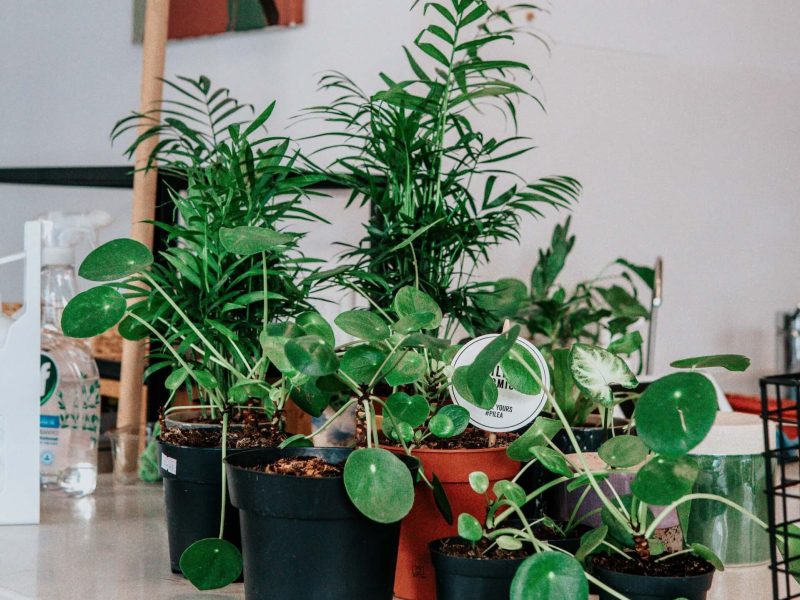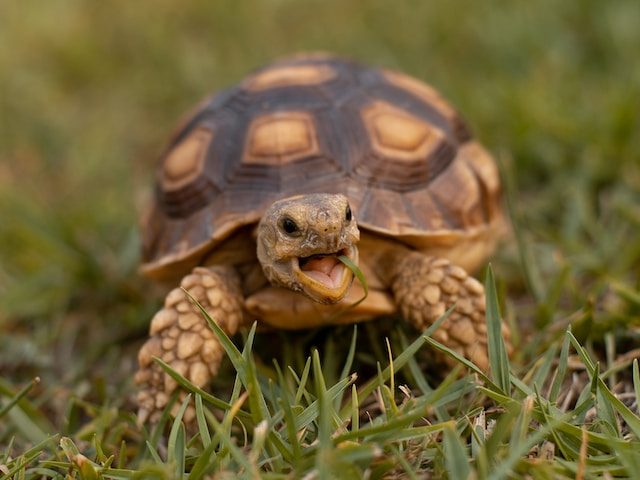
Contents
What is a Pebble Tray and Why Use It?
A pebble tray, in its most basic description, is a shallow tray or dish filled with small pebbles, stones or gravel. Water is added to the tray, but importantly, only to a level just below the top of the pebbles.
A potted plant is then placed on top, making sure the base of the pot does not sit in water, to prevent waterlogging the soil. This setup, while appearing quite elementary, is a deceptively useful tool.
The magic of the pebble tray lies in the evaporation process. As the water in the tray evaporates, it increases the local humidity of the surrounding air. This is particularly beneficial for houseplants from tropical environments, where high humidity is the norm rather than the exception. When these plants find themselves in a typical centrally-heated home, they can often struggle with the drier air.
Why should you try out a pebble tray?:
- It’s an economically savvy solution, requiring just a tray, some pebbles, and water.
- It works continuously, providing a constant source of humidity as long as there’s water in the tray.
- The pebble tray method can be used for virtually any plant that appreciates a humid environment.
Choosing the Right Pebbles for Your Tray
One might think picking pebbles for a tray is a trivial task, but there a couple of considerations. The kind of pebbles you select can have a significant impact on the level of humidity provided to your plants and their overall wellbeing.
Size of the Pebbles
Small pebbles leave smaller gaps inbetween each other, meaning they may not hold enough water to provide the needed humidity over a longer time period. While excessively large pebbles are awkward for pots to sit flat on.
A good rule of thumb is to opt for medium-sized pebbles, about 1-2 cm in diameter. This size is generally ideal for most houseplant trays.
Type of Pebbles
When it comes to the type of pebbles, it’s not just about aesthetics. While it’s true that different types can add a decorative element to your tray, some are more suited for this purpose than others.
River pebbles or natural stones are commonly used because of their smooth surface and ability to retain moisture efficiently. Avoid using shiny or polished pebbles, as these may contain chemicals that could potentially harm your plants.
Colour of the Pebbles
Believe it or not, the colour of the pebbles can also influence the effectiveness of your tray. Dark-coloured pebbles, such as black or deep blue, can absorb and retain heat, which in turn promotes evaporation and increases humidity.
On the other hand, light-coloured pebbles can help reflect light onto your plants, which can be beneficial for light-loving species.
Selecting the Best Location for Your Pebble Tray
The first consideration is light. Since most indoor plants thrive in bright, indirect sunlight, it’s wise to place your pebble tray in a location that benefits from this.
However, strong sunlight can cause rapid evaporation, leaving your tray dry and your plant bereft of the much-needed humidity. Hence, a spot with moderate, indirect sunlight would be ideal.
Temperature is another crucial factor. Your selected location should not be overly hot or cold. Rapid temperature fluctuations can cause the water in the tray to evaporate too quickly or not at all, both of which are not ideal for maintaining the necessary humidity levels. A moderate room temperature of around 18-24°C (64-75°F) is generally recommended.
Finally, consider air circulation. While it’s true that a good circulation of air can prevent diseases in houseplants, it can also lead to quick evaporation of the water in the pebble tray. Therefore, avoid placing your tray in drafty areas or directly under air vents or fans.
Step-by-Step Guide on Making a Pebble Tray
Materials Needed
- Tray: This could be a shallow dish or any waterproof container. It should be wide enough to hold the plant pot and deep enough to hold pebbles and water.
- Pebbles: You can use any small stones or gravel. The pebbles serve as a stand for the plant pot, raising it above the water level. You can often get these from garden centers or aquarium supply stores.
- Water: This will evaporate to create a humid microclimate around your plant.
Procedure
Once you’ve gathered your materials, it’s time to craft your pebble tray. The process is simple and straightforward.
- Fill the Tray: Cover the bottom of your chosen tray or container with a single layer of pebbles.
- Add Water: Pour water into the tray, ensuring it reaches about halfway up the pebbles. Your aim is to keep the water level below the top of the pebbles, preventing the plant pot from sitting directly in the water.
- Place the Plant: Carefully set your plant pot on top of the pebbles. The bottom of the pot should not be in contact with the water.
- Monitor and Refill: Over time, the water in the tray will evaporate, creating a humid environment for your plant. Monitor the water level regularly and refill as needed to maintain the humidity.
In just these four steps, you’ve created a lovely, humid environment for your houseplant. The pebble tray is a fantastic solution for those looking after plants that thrive in high humidity, but it’s also a great addition to any indoor plant care regimen.
Tips for Maintaining Your Pebble Tray
Maintaining your pebble tray is just as important as setting it up. Here are a few tips to ensure its effectiveness:
- Clean Regularly: To prevent the growth of algae or bacteria, clean your pebble tray at least once a month. Remove the pebbles and scrub the tray before replacing the pebbles and adding fresh water.
- Adjust Water Level: Remember, the goal is to create humidity, not to water your plant through the tray. If you notice that the pot is absorbing water from the tray, you may have too much water. Drain some off to ensure the pot is not sitting in water.
By incorporating these maintenance steps into your plant care routine, you can ensure your pebble tray remains an effective tool for creating the perfect environment for your indoor plants.
How Often to Refill Your Pebble Tray
The frequency of refilling your pebble tray largely depends on various factors like the size of your tray, the type of plant you are nurturing, and your home’s ambient conditions.
The Size of the Tray: It’s a simple rule, the larger the tray, the more often it would need to be refilled. A smaller tray has less surface area for water evaporation and therefore, may not necessitate frequent refilling.
The Type of Plant: Some houseplants require higher humidity levels compared to others. For instance, ferns and orchids typically thrive in more humid environments and may need the pebble tray to be refilled more often. On the other hand, cacti and succulents prefer a dry environment, meaning the pebble tray may not need to be refilled as frequently.
Ambient Conditions: The rate at which water in your pebble tray evaporates depends on your home’s ambient conditions. If your home is dry and hot, the water in the tray will evaporate quickly, and hence, it will require more frequent refilling. Conversely, if the conditions are cool and damp, the water will evaporate more slowly, reducing the need for frequent refills.
As a general rule of thumb, you should check the pebble tray at least once a week. However, during hot, dry periods, or when the heating is on during the winter, you may need to check more often.
It’s vital to keep the tray filled with water at all times, but ensure that the plant’s roots are not sitting in water, as this can lead to root rot. As always, observing your plant’s health and adjusting accordingly will ensure it continues to flourish.
FAQs
What is a pebble tray?
A pebble tray is an incredibly simple, and effective tool to increase the humidity for houseplants. It’s nothing more than a shallow tray or dish filled with pebbles and water. The idea is that as the water in the tray evaporates, it creates a microclimate of increased humidity around the plants, which many houseplants find beneficial.
How does a pebble tray work?
A pebble tray is not a complex contraption. In essence, it’s a shallow dish or tray filled with pebbles and water. Over time the water in the tray evaporates and increases the local humidity for the plants above it. The pebbles serve a double purpose in giving the pots something to sit on that is out of the water and in increasing the surface area for evaporation.














